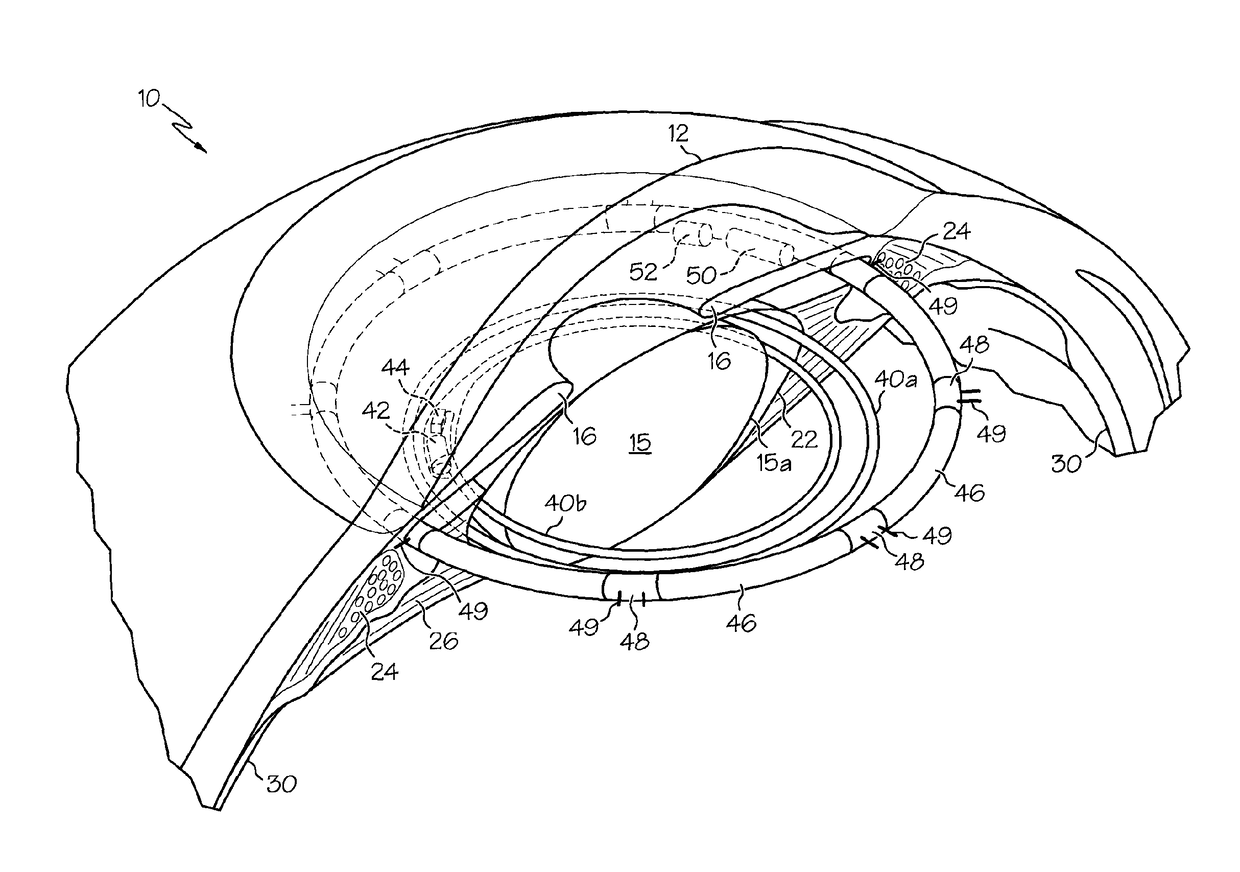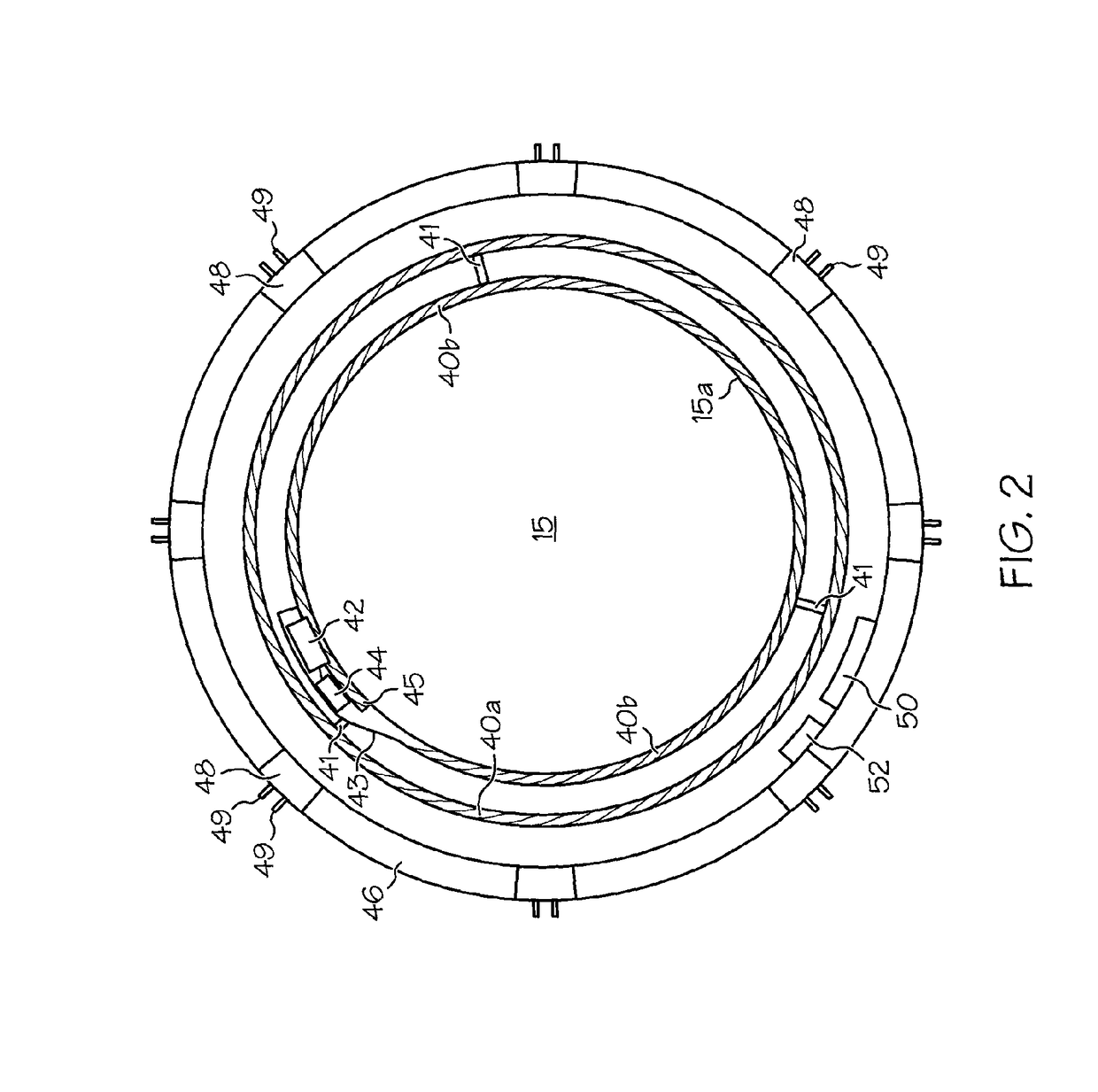Accommodating intra-ocular lens system
a technology of intraocular lens and ocular lens, which is applied in the field of correcting and/or treating presbyopia, can solve the problems of limited accommodation ability, inability to change shape of synthetic iol implanted in subjects for the treatment of cataracts, and inability to adapt to the needs of patients
- Summary
- Abstract
- Description
- Claims
- Application Information
AI Technical Summary
Benefits of technology
Problems solved by technology
Method used
Image
Examples
Embodiment Construction
[0024]As defined herein, the term “ciliary muscle” means a ring of striated smooth muscle encircling the eye that controls accommodation for viewing objects at varying distances. The ciliary muscle also regulates the flow of aqueous humor into Schlemm's canal, and has parasympathetic and sympathetic innervation. The terms “ciliary body” and “ciliary complex” are structures that include the ciliary muscle.
[0025]The term “ciliary muscle signal” means an action detected at the subject's ciliary muscle, and more specifically means an action relating to the ciliary muscle in the form of a neuroelectrical pulsation, a muscle action potential, a muscle contractile force or movement, a chemical signal, or a combination of these means. The ciliary muscle signal can be electrical / neuroelectrical or chemical / neurochemical in nature, or it can be initiated by mechanical movement of the ciliary muscle.
[0026]FIG. 1 illustrates a human eye 10, which has an anterior chamber 18 between the cornea 12...
PUM
 Login to View More
Login to View More Abstract
Description
Claims
Application Information
 Login to View More
Login to View More - R&D
- Intellectual Property
- Life Sciences
- Materials
- Tech Scout
- Unparalleled Data Quality
- Higher Quality Content
- 60% Fewer Hallucinations
Browse by: Latest US Patents, China's latest patents, Technical Efficacy Thesaurus, Application Domain, Technology Topic, Popular Technical Reports.
© 2025 PatSnap. All rights reserved.Legal|Privacy policy|Modern Slavery Act Transparency Statement|Sitemap|About US| Contact US: help@patsnap.com



